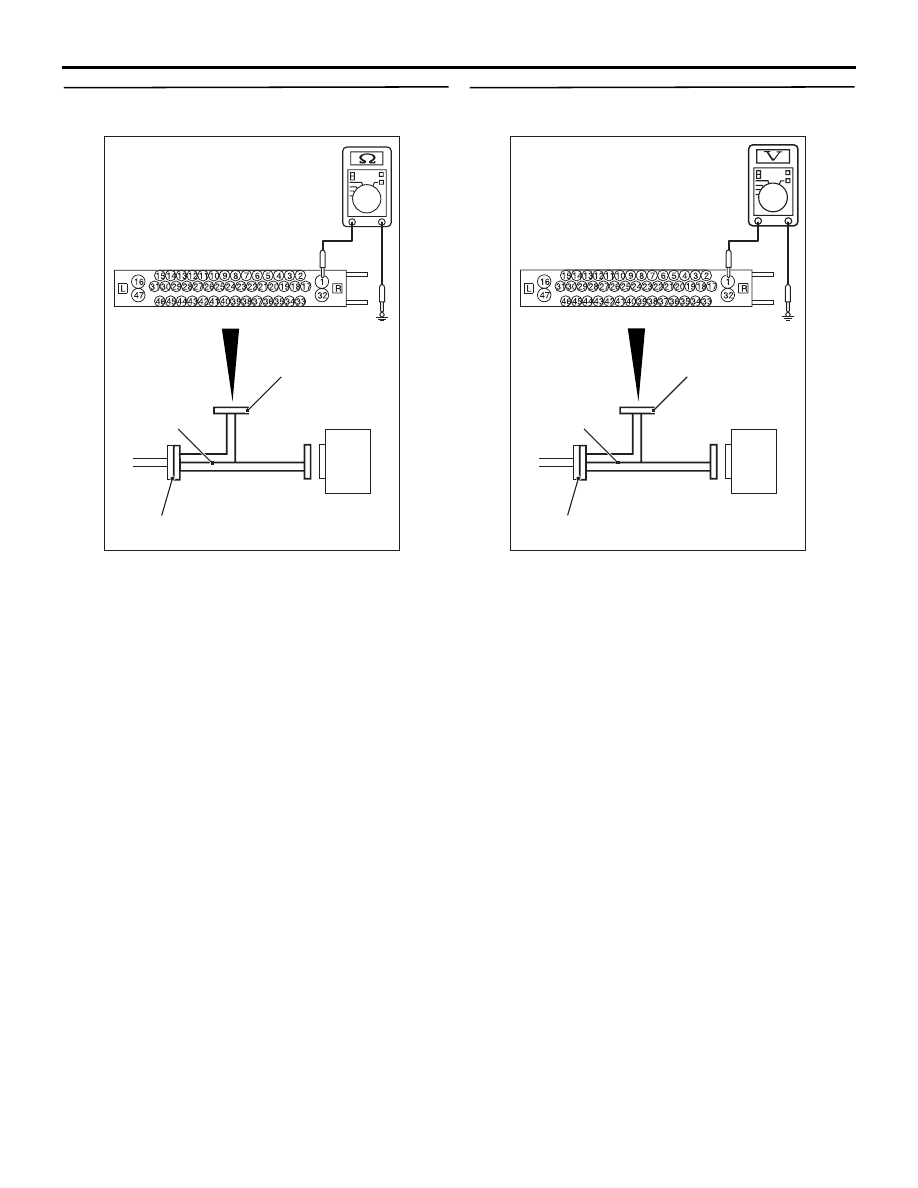Mitsubishi Lancer (4A9 engine). Manual - part 60

TROUBLESHOOTING
ACTIVE STABILITY CONTROL SYSTEM (ASC)
35C-93
STEP 7. Resistance measurement at A-58 ASC-
ECU connector
AC606869FS
ASC-ECU
MB991997
Check harness
A-58 ASC-ECU
harness connector
(1) Disconnect the ASC-ECU connector, connect
special tool ASC check harness (MB991997) to
the harness-side connector, and then measure
the resistance at the special tool connector side.
NOTE: Do not connect the special tool ASC
check harness (MB991997) to ASC-ECU.
(2) Disconnect the fusible link No.26.
(3) Measure the resistance between the terminal
No.1 and the body earth.
OK: No continuity
Q: Is the check result normal?
YES :
Replace the fusible link No.26. Then go to
Step 11.
NO :
The short circuit may be present in the
power supply circuit. Repair the wiring
harness between the A-58 ASC-ECU
connector terminal No.1 and the fusible link
No.26, and then replace the fusible link
No.26. Then go to Step 11.
STEP 8. Voltage measurement at the A-58 ASC-
ECU connector
AC606869DI
ASC-ECU
MB991997
Check harness
A-58 ASC-ECU
harness connector
(1) Disconnect the ASC-ECU connector, connect
special tool ASC check harness (MB991997) to
the harness-side connector, and then measure
the voltage at the special tool connector side.
NOTE: Do not connect the special tool ASC
check harness (MB991997) to ASC-ECU.
(2) Measure the voltage between the terminal No.1
and the body earth.
OK: Approximately system voltage
Q: Is the check result normal?
YES :
Go to Step 9.
NO :
The open circuit may be present in the
power supply circuit. Repair the wiring
harness between the A-58 ASC-ECU
connector terminal No.1 and the fusible link
No.26. Then go to Step 11.